If you buy through our links, we may earn an affiliate commission. This supports our mission to get more people active and outside.Learn about Outside Online's affiliate link policy
The 14 Best Ski Goggles of 2026

(Photo: Ray J Gadd)
The best ski goggles are the ones you don’t notice, like a clear windshield between you and the world. Whether it’s a stormy powder day or a warm spring morning, the last thing you want to be doing is worrying if you picked the right lenses for the conditions or fidgeting with the fit of your goggles on your face.
These days, most ski goggles come with shockingly good lens quality—fog-free optic clarity and generous field of view is practically a guarantee—so finding the right ones for you is more a matter of preference. Do you want lenses that swap out based on the light or one lens that does it all? Do you like an oversized frame or more of a petite fit? Do you want a bubble-shaped lens with wide peripheral vision or a flatter, more low-profile look? Do you need them to fit over your prescription eyeglasses?
Testers tried 51 goggles in various light conditions and snow scenarios to find the pairs that enhance any ski day. These are their picks for the best ski goggles.
Best Ski Goggles: At a Glance
- Best Overall: Scott React Amp Pro ($270)
- Best Value: Goodr Snow G ($75)
- Best Venting: Bolle Nevada (from $100)
- Most Unique Design: Julbo Launcher (from $290)
- Best Optic Clarity: Revo Solstice No. 9 ($299)
- Best OTG Goggle: POC Vitrea ($260)
- Best Style: Oakley Line Miner Pro (from $285)
- Best Low Light: Uvex Evidnt Attract V ($290)
- Best Peripheral Vision: Giro Article II ($170)
- Best Magnetic Lens-Swap System: Anon M5 ($300)
- Best for Wider Faces: Smith 4D Mag XL ($348)
- Best for Smaller Faces: Glade Adapt 2S ($149)
- Most Comfortable: Shred Gratify ($250)
- Honorable Mention: Sweet Protection Connor Rig Reflect ($235)
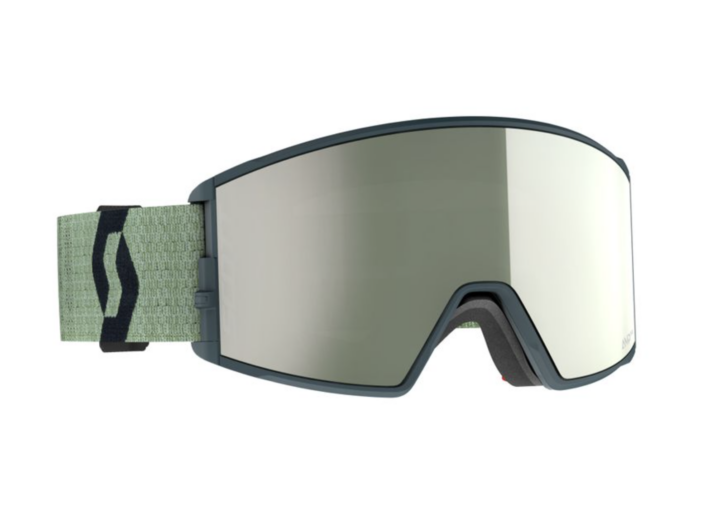
Best Overall
Scott React Amp Pro
Lens shape: Cylindrical
Number of lenses included: 2
Face fit: Medium to large
Pros and Cons
+ Magnetic lenses swap out easily
+ Transition lens adapts to range of conditions
+ Fits a wide variety of faces
– Mirrored dark lenses is very dark
Scott’s first foray into the integrated magnetic lens system is a huge success—testers loved these goggles across the board. The React Amp Pro comes with a chrome-coated mirrored transition lens that can handle gray days or bright sun, as well as a non-chrome lens best suited for low-light.
One tester wore them to ski two California volcanoes, Mount Shasta and Lassen Peak, and opted for the darker lens the entire time. “When you’re skiing 7,000 feet in mixed conditions, you need goggles that protect your eyeballs from getting burned and still give you enough clarity to see in low light. These did both,” she said.
The frame has a handy lever on the side that releases the lens, so it only comes off when you want it to. “The lens will never pop out accidentally as it’s latched on. A-plus on that front,” another tester said.
The three-layer non-sweat padded foam felt firm and plush against the face, and the extra-wide non-slip strap held the goggles steadily in place. Somewhere in between oversized and petite, these mid-range goggles fit a wide variety of faces.
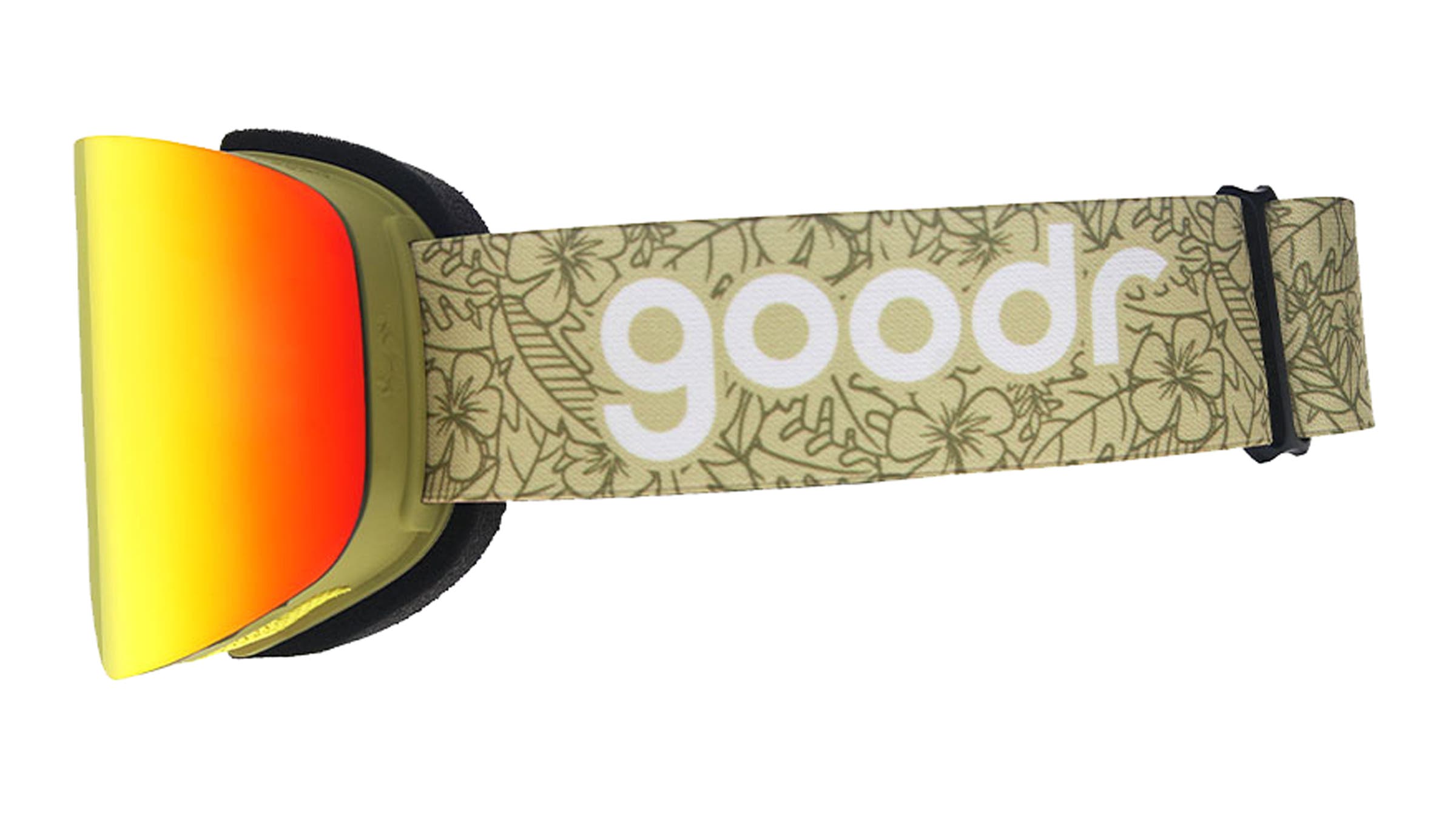
Best Value
Goodr Snow G
Lens shape: Cylindrical
Number of lenses included: 2
Face fit: Medium
Pros and Cons
+ Very inexpensive
+ Magnetic lens is easy to swap on the go
+ Fun colors
– Lenses can pop off unintentionally
The magnetic lens is really easy to swap out, but it also pops off unintentionally if you tug the goggles the wrong way.
Goodr, which launched in 2015 with $25 polarized sunglasses, essentially makes lenses at the same price point as those you’d buy at the gas station but way more fun and better quality. The Snow G comes in candy-bright colorways with names like Bunny Slope Dropout (pink), Here for the Hot Toddies (orange), and Après All Day (black).
Like much more expensive goggles, these come with a magnetic lens detaching system that swaps out in a second for an included low-light lens. The lenses come with an anti-fog and anti-glare coating. All agreed that skiers who tend to lose or scratch goggles on the regular, should seriously consider this budget-friendly option.
Interestingly, our testers didn’t know the price of these goggles while putting them through the paces, and they all praised the lens quality on sunny and cloudy days and were in awe of how easy it was to swap out lenses. The downside of this quick-change system is that the lenses can accidentally pop off if you tug the goggle the wrong way while pulling it onto or off of your helmet or face.
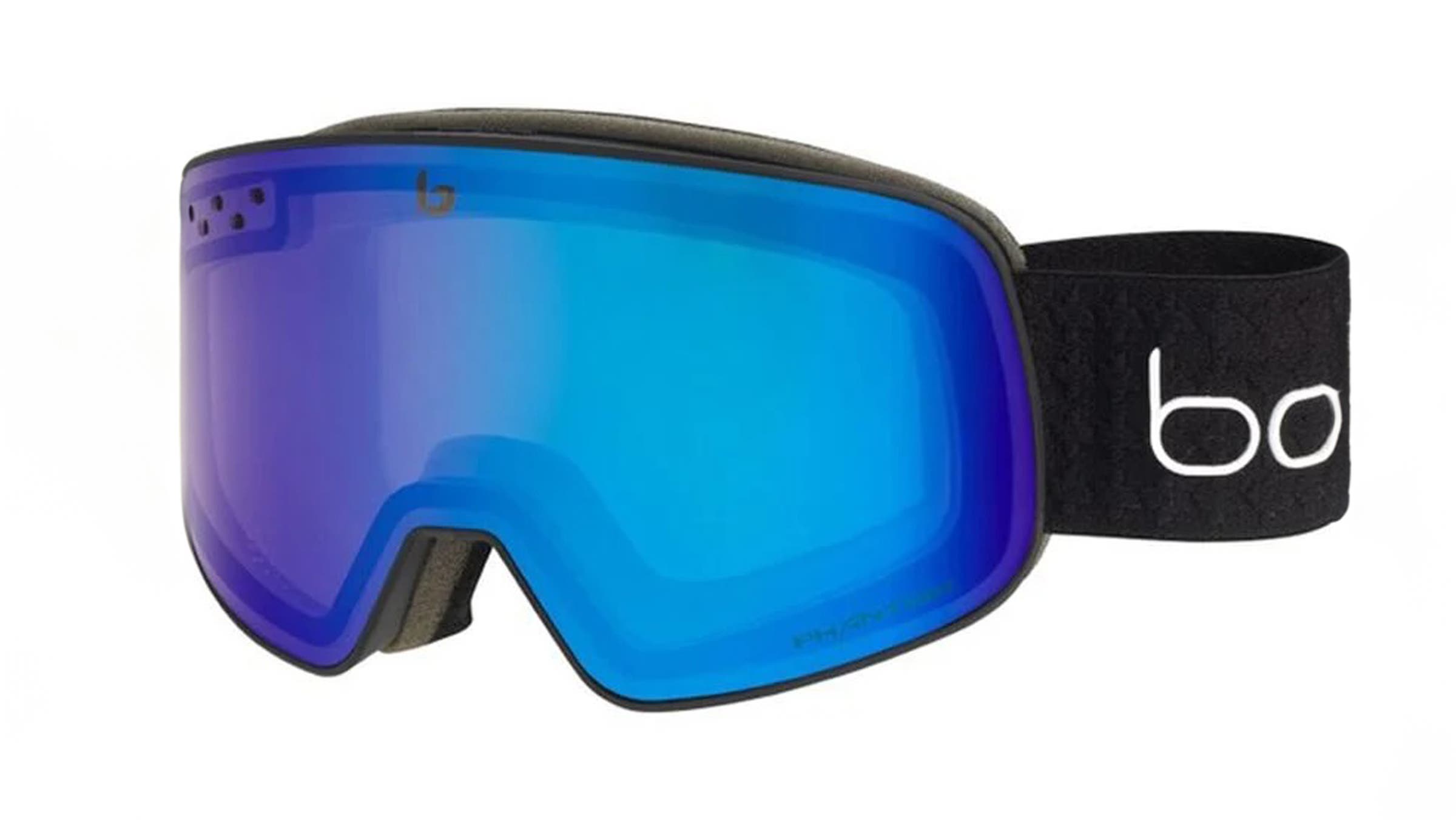
Best Venting
Bolle Nevada
Lens shape: Cylindrical
Number of lenses included: 1
Face fit: Medium
Pros and Cons
+ Didn’t fog, even on sweaty days
+ Fit a wide range of face sizes
+ One photochromatic lens makes for less decision making
– A little plain looking
Most quality goggles these days don’t fog unless you get moisture trapped under the lens. The Bolle Nevada ski goggles were especially fog-free thanks to a novel vent on the upper right corner of the lens that spread out hot air like a ceiling fan, as well as traditional upper and lower vents. (We tested the newest version of the Nevada, which comes out in fall 2025.) These goggles aren’t flashy or super high tech, but they were reliable on all kinds of ski days, from stormy, low-light powder days to bright spring tours. A photochromic lens with Bolle’s Phantom technology easily transitions from dawn to midday sun.
“I don’t know many goggles that could work for both night skiing and skiing on a California sunny day,” one tester said. “This one lens worked great in both scenarios.” If you’re someone who doesn’t want to deal with swapping out lenses when the light changes, the Nevada with its fixed lens would be a good choice for you. These Bolle ski goggles have an easy, unobtrusive fit; for those with smaller faces, they come in a small and junior size.
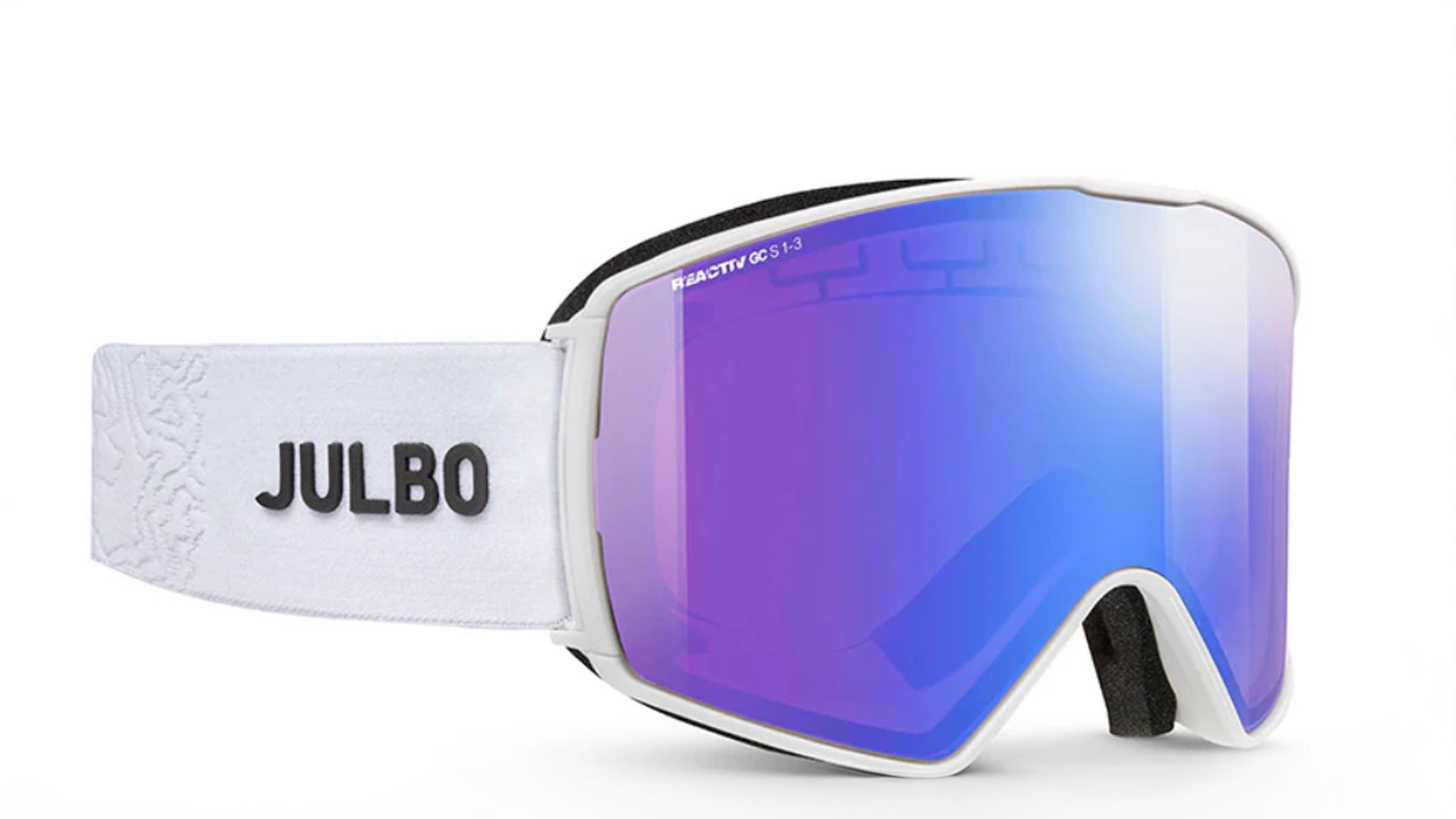
Most Unique Design
Julbo Launcher
Lens shape: Cylindrical
Number of lenses included: 1
Face fit: Medium to large
Pros and Cons
+ Wide field of view
+ One lens that truly does it all
+ Ventilation system is bold and different but not for everyone
– Too oversized for smaller faces
The first thing to love about the Julbo Launcher is its unique design: To ventilate the goggles as you heat up, release dual magnets on the side of the frame. The entire lens pops forward, away from the frame, leaving about a half an inch gap that acts like an open window. It’s a novel concept that works well for fighting fog, but some testers found it a little unwieldy.
Julbo’s photochromic Reactiv lens technology (also featured in its trail running shades) makes for a fixed one-lens wonder that’s easy to like and adapts to changing light conditions. “I didn’t even think twice about my lens choice—because with a photochromic, non-interchangeable lens, there is no choice,” one tester said. “Life has enough choices, no?”
Another nice feature is the provided travel bag: It’s a small, collapsible case with a hard frame along just one edge, offering structure and protection to keep your lenses from getting crushed in your duffle bag. It takes up far less room than those big, bulky cases goggles sometimes come in. Bonus: This best ski goggle’s nylon strap is made from recycled fishing nets.
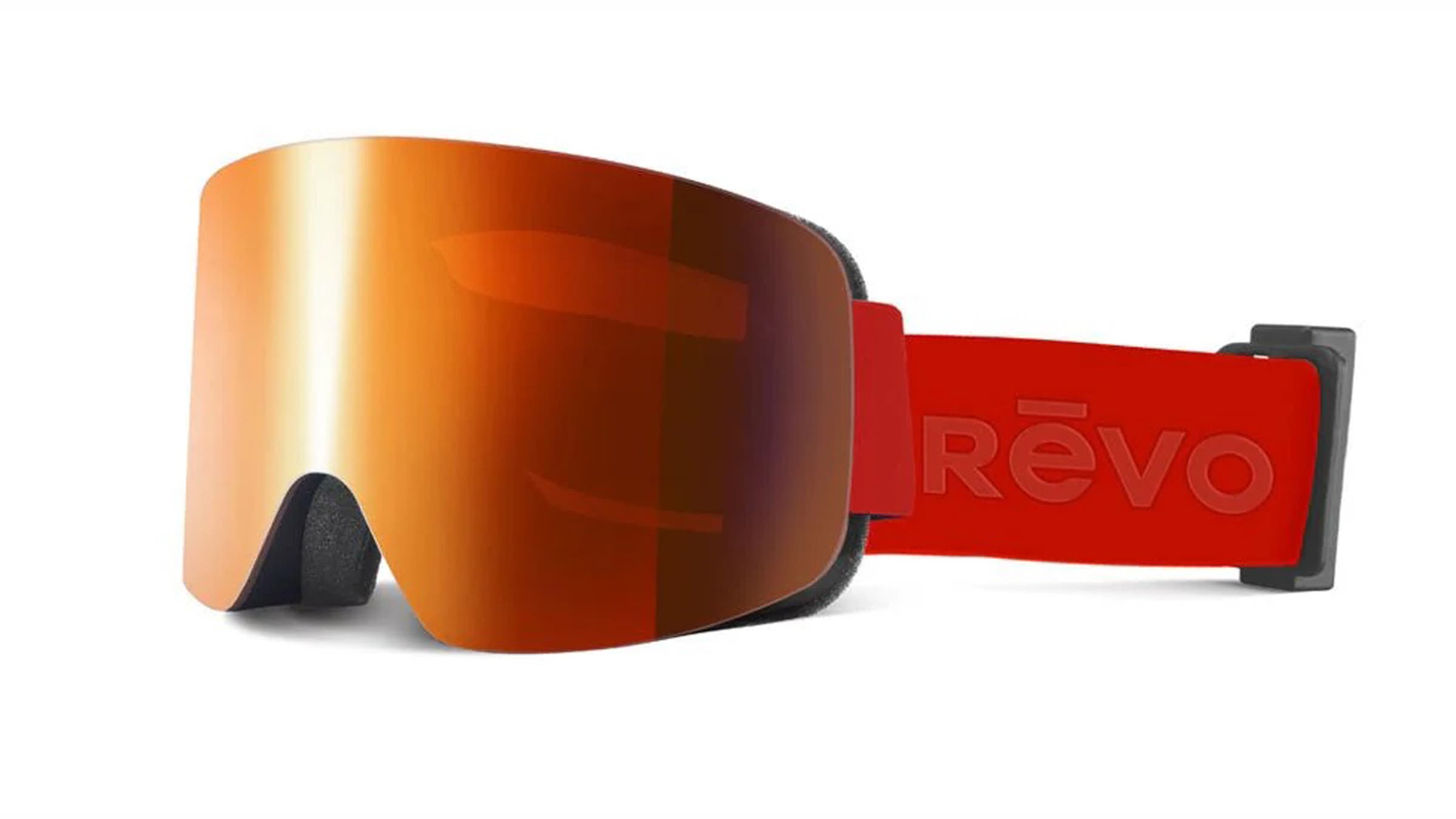
Best Optic Clarity
Revo Solstice No. 9
Lens shape: Cylindrical
Number of lenses included: 1
Face fit: Medium to large
Pros and Cons
+ Clean, understated look
+ Magnetic lens is easy to swap
+ Comes in a prescription lens option
– One of the most expenses goggles we tested
Sometimes, when you put a pair of goggles on, you just know: This lens is special. The Revo Solstice No.9 has the it factor. It has an ample field of view with nothing blocking your line of sight. It fits snugly and comfortably without pinching your nose, and the size feels just right. “These goggles strike a nice balance of being big but not as humongous as some of the currently en vogue goggles,” one tester said. But where it really stood out was optic clarity. These best ski goggles provided an unrivaled crisp, clear view of the mountain.
Revo’s SuperNova+ photochromic lens adjusted between low and bright light conditions and offered sufficient filtering. The clarity of vision was unmatched, even in dim lighting. The magnetic lens interchange system is simple and secure, no complicated fidgeting required. For backup, these goggles come with an additional yellow lens for storm days, but our testers reported that the photochromic lens works well in overcast conditions. It had great breathability with no fogging whatsoever. Only gripe: The silicon strap is meant to be grippy on the inside to stay affixed to your helmet, but our long-haired testers kept snagging their strands in the strap.
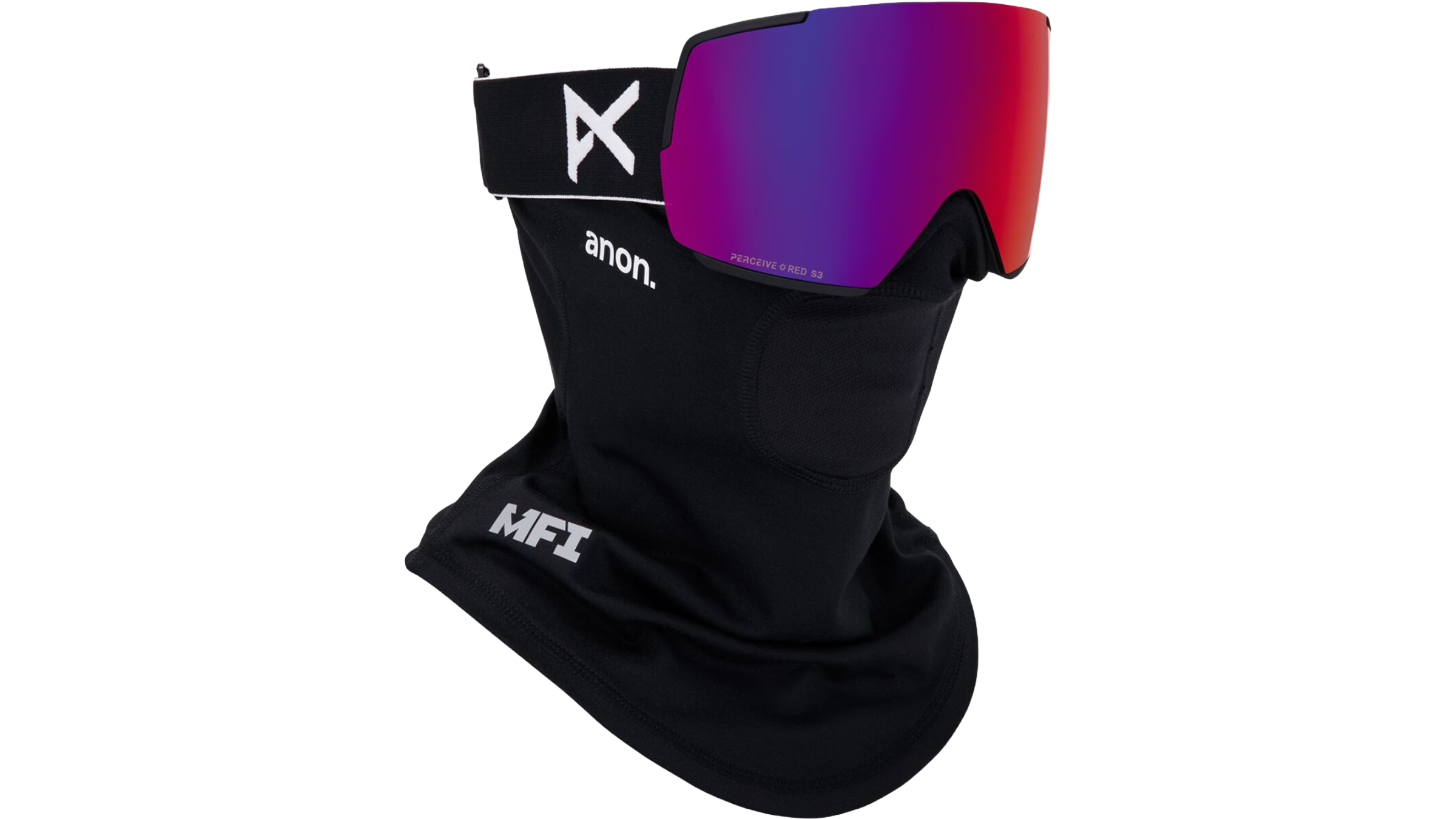
Paid Advertisement by Backcountry
Anon M5 Goggles + MFI Mask
This goggle perfectly combines clear vision and style. The flat-toric lens and oversized frame design give you a wide field of view, while the Perceive lens technology enhances contrast and terrain definition. If conditions change from bluebird to overcast, the Magna-Tech magnetic lens system lets you make quick, secure swaps without taking off your gloves. The cherry on top is the MFI technology, which integrates seamlessly with magnetic face masks.
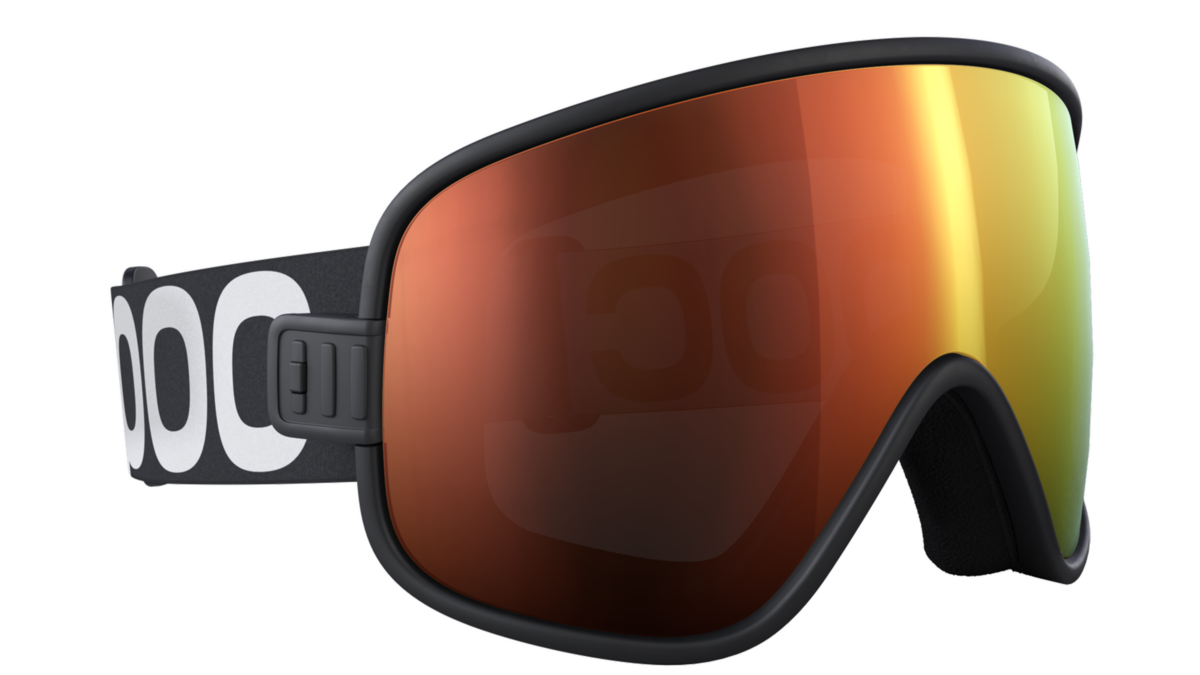
Best Over-the-Glasses Goggle
POC Vitrea
Lens shape: Toric
Number of lenses included: 2
Face fit: Medium to large
Pros and Cons
+ Non-magnetic lens that stays securely in place
+ Offer extended coverage to upper cheeks
+ Compatible with a wide range of helmets
– Lens swap tab is oversized and bulky looking
Here’s the deal with magnetic lenses on goggles: They’re super convenient and easy to change out, but they sometimes pop off unintentionally, like when you’re putting your goggles up on your helmet while wearing bulky gloves. The POC Vitrea doesn’t employ a magnetic lens and our testers liked that because it meant the lens stayed in when you wanted it to.
If you want to swap in the low-light lens that comes included for a storm day, it’s easy: Just press on the big rubber tab on the edge of the frame and one lens comes off, while the other goes in. “One of the smartest and easiest to use non-magnetic lens change systems I’ve seen,” one tester said. The only gripe was that the tab on the frame that you use to swap lenses is pretty big and sticks out like a giant rubber eraser.
The shallow toric-shaped lens provided a great deal of peripheral vision in a low-profile look. That means you get ample and clear sight without that distorting bubble effect you get with some oversized spherical goggles.
One of our goggles testers was about to undergo an eye operation that required her to go without contact lenses for two weeks, so she tested goggles while skiing around Lake Tahoe with her glasses underneath. While other goggles pinched at the nose and felt too small or tight, the POC Vitrea was oversized and spacious enough to accommodate her glasses comfortably. “I don’t love skiing in glasses, but if you have to do it, these goggles make it stress-free,” she said.
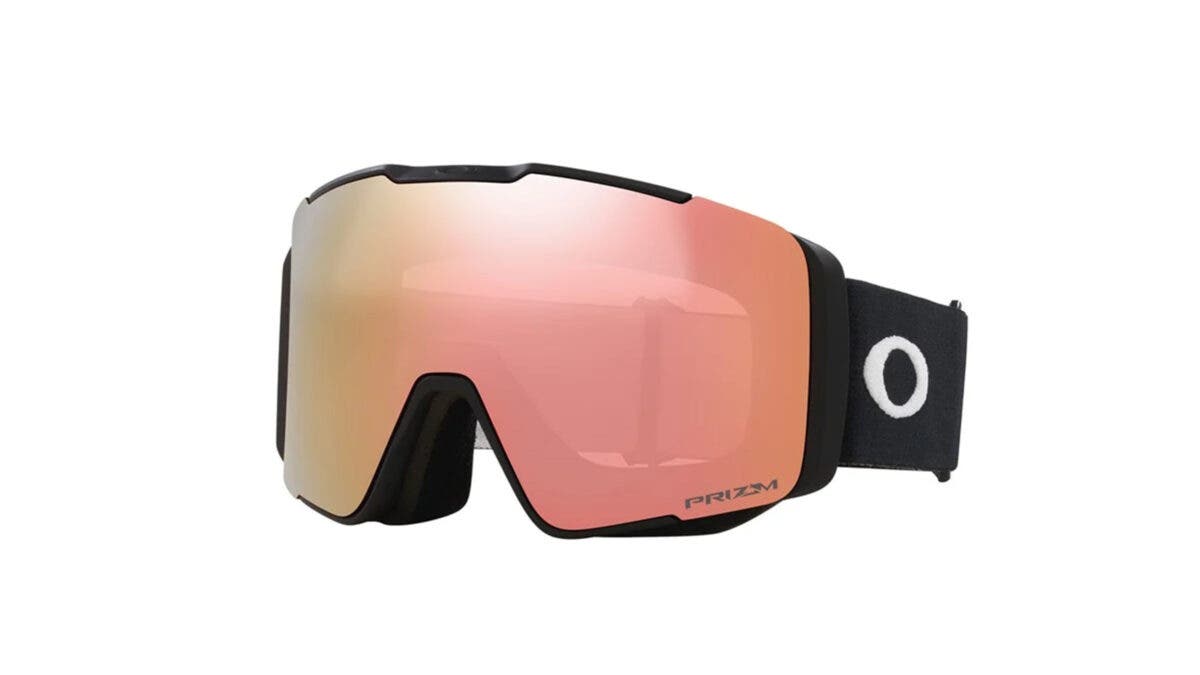
Best Style
Oakley Line Miner Pro
Lens shape: Cylindrical
Number of lenses included: 2
Face fit: Medium to large
Pros and Cons
+ Partly frameless design gives it a low-profile look
+ Comes in medium, large, and low-bridge fit options
– Takes a minute to swap out the lens
– Lens gets a touch foggy in sweaty climates
If you’re the kind of skier or rider who prioritizes gear that looks as good as it functions, the Oakley Line Miner Pro—a newly upgraded version of Oakley’s popular Line Miner goggle—has you covered.
This streamlined goggle oozes style—you’ll find it on riders sessioning the park and competing in freeride contests—but it’s also exceptionally high-performance, offering a wide field of view and excellent clarity and glare reduction.
The Line Miner Pro sports a more affordable single-layer lens, versus the slightly pricier double-layer option you’ll find in other goggles on this list. Double-layer lenses usually help cut down on fogging thanks to increased ventilation between the layers, and while some testers reported a touch of fog on sweaty inbounds bootpacks, the Liner Miner Pro stayed mostly fog-free. The face foam was super breathable, too. “I felt cool wearing this goggle, in both definitions of the word,” one tester said.
Oakley’s Switchlock Technology, which pairs six magnets around the frame with two mechanical locks, makes changing out the lens for the provided spare seamless. Two hidden red tabs on either side of the frame pop the lens out and it just takes a moment to get the new lens snugly into place.
It took some testers extra time to figure it out initially, but once they learned the process, swapping lenses was a cinch.
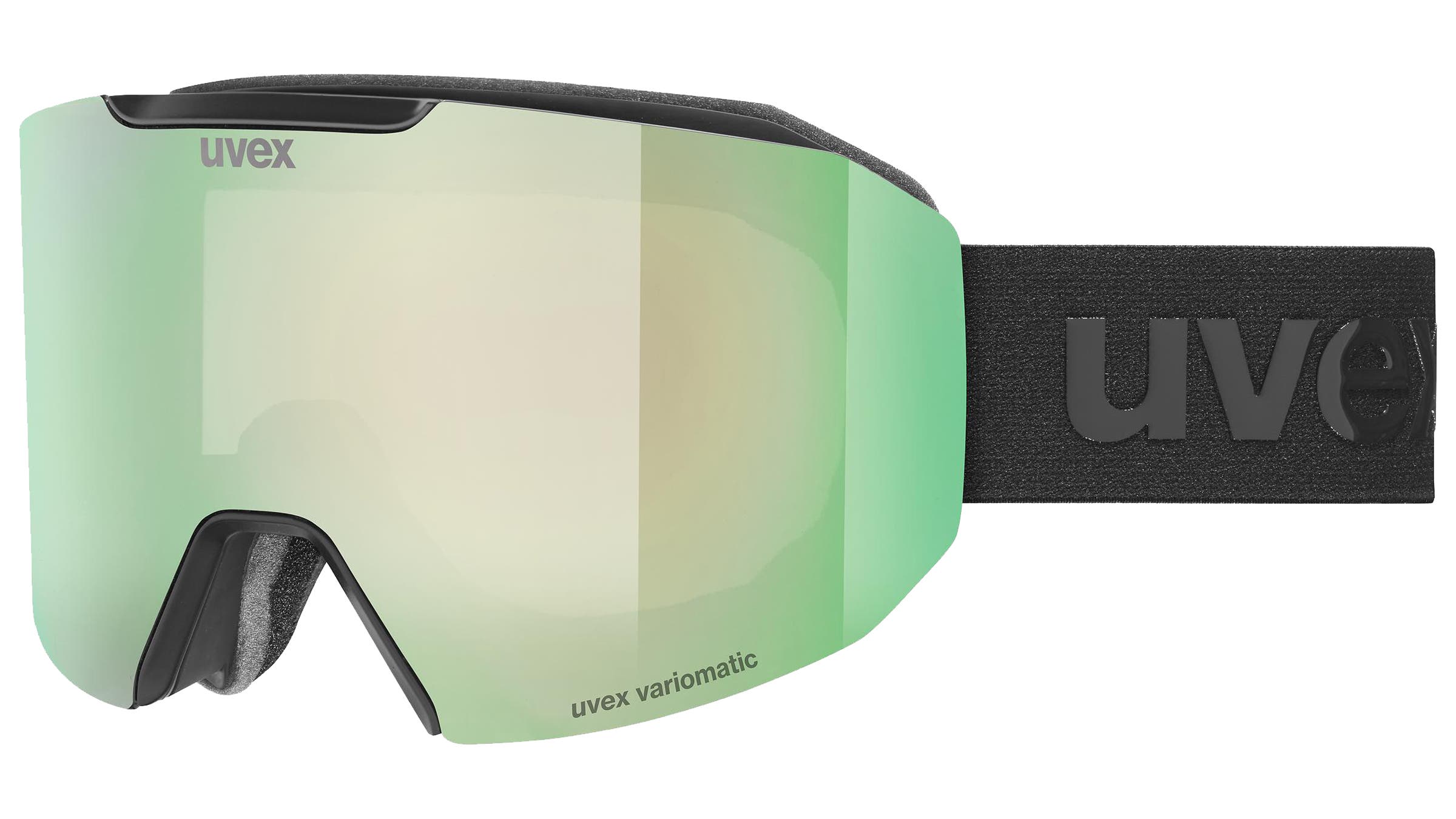
Best for Storm Days
Uvex Evidnt Attract V
Lens shape: Cylindrical
Number of lenses included: 2
Face fit: Medium to large
Pros and Cons
+ Lenses are very easy to exchange
+ Simple without lacking in performance
+ 3D foam padding with velour is soft on face
– A more basic-looking goggle
– Expensive
In a sea of embellished and overbuilt goggles, the Uvex Evidnt Attract V surprised testers with its simplicity and reliability. “I kept grabbing these goggles on storm days because I trusted they would work well,” one tester said.
A basic workhorse of a goggle, it has all the trappings you need, nothing extra or fancy: a magnetic lens that swaps out in a pinch for an included low-light option, wide peripheral vision thanks to a cylindrical shaped lens, and a fit that was comfortable on an array of faces.
The photochromic lens adjusted well to changing light conditions. “Skied these goggles until last chair at 4 p.m. and they magically transformed into a low-light lens at the end of the day,” said another tester, who wore the goggles on a road trip to Jackson Hole. A 3D foam softened by a layer of velour felt soft and breathable on the face.
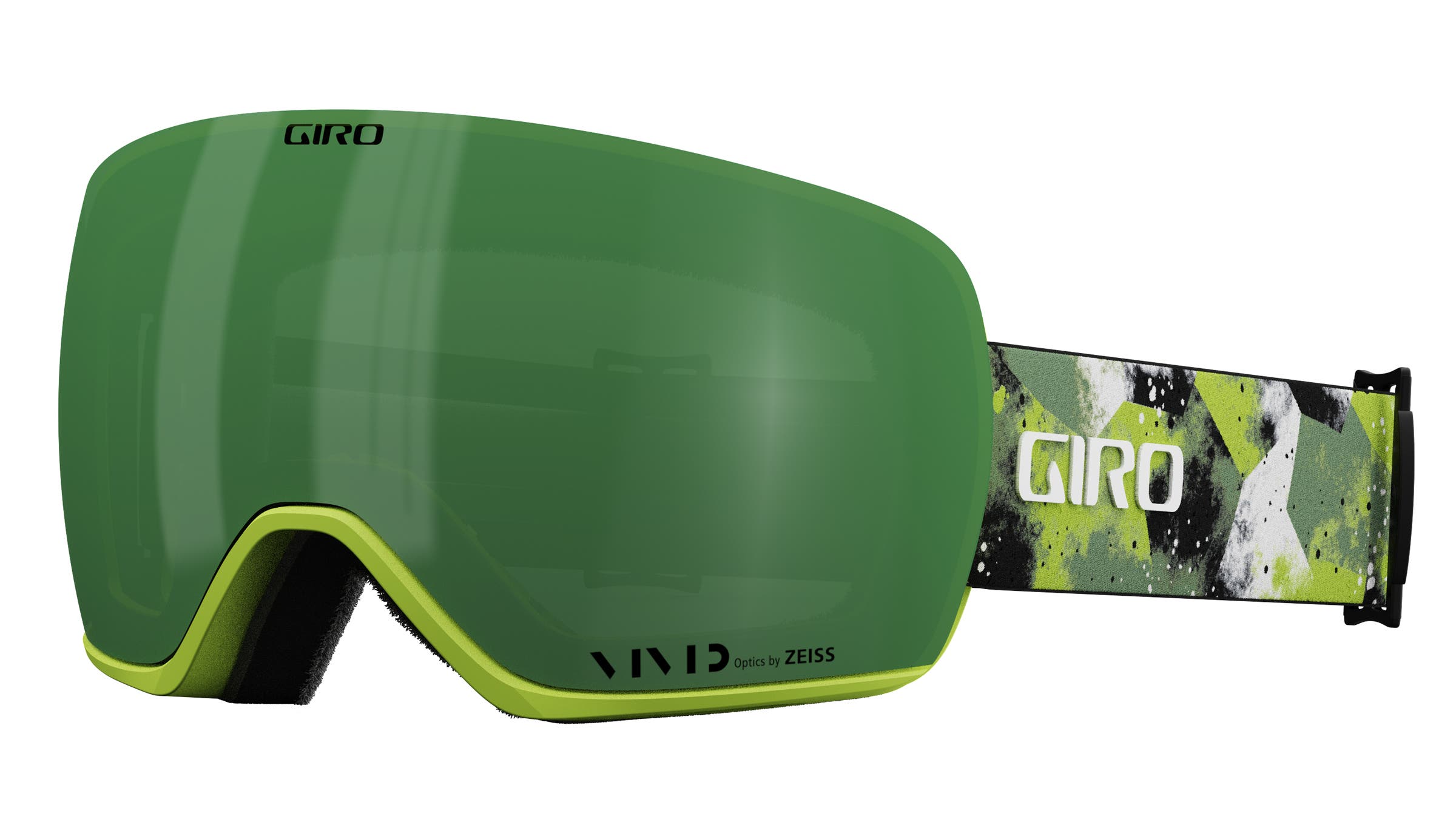
Best Peripheral Vision
Giro Article II
Lens shape: Toric
Number of lenses included: 2
Face fit: Small to medium
Pros and Cons
+ Exceptional contrast in flat light
+ Best peripheral vision in the test
+ Lots of customization options
+ Good value
– Lenses are unwieldy to swap out
You get loads of customization options with the Giro Article II, which is frameless up top and has a thin frame along the bottom half. Choose amongst a dozen different strap designs and 10 lens tints to find the combination that works best for you.
This toric-shaped lens offered what one tester called “unimpeded peripheral vision,” as well as full UV protection coupled with brilliant contrast in low-light conditions. A bright-sun and a low-light lens come included—a steal for a goggle in this price range—but the lenses are slower to change out than a magnetic lens. You have to click the lens precisely into position, which can be clunky with gloves on, but that also means they’re less likely to pop off unintentionally.
“Swapping out the lens was like wrestling a small animal,” one tester said. “While mauling the lens, I felt like I was going to break the goggle.” Added another tester, “Swappable lenses should be intuitive, and these were definitely not.”
Lens-change difficulty aside, the Article II fit great on smaller faces, even though the goggle itself looks wide, and it paired nicely with both Giro and non-Giro helmets. Also available in a prescription lens.
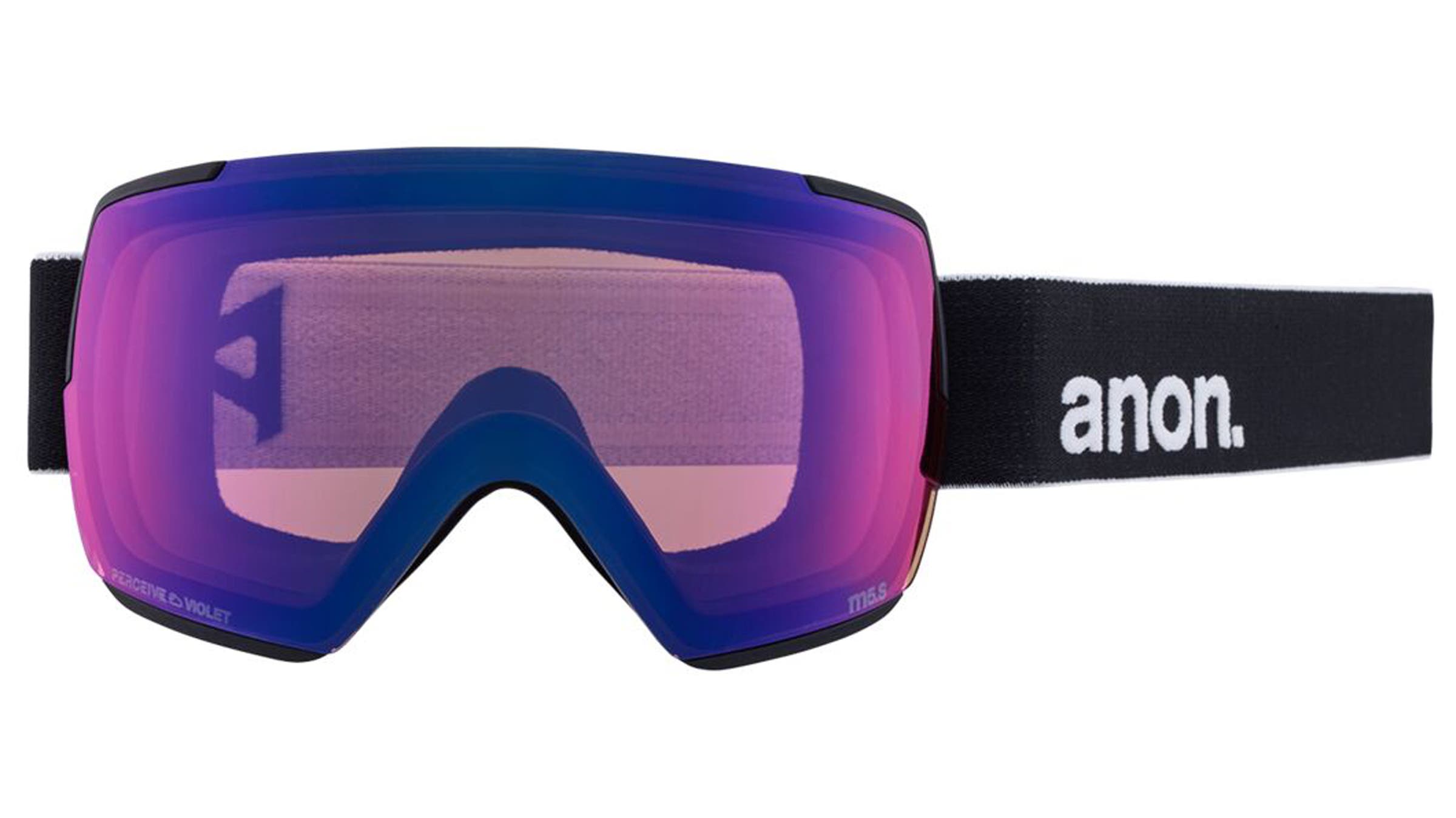
Best Magnetic Lens-Swap System
Anon M5
Lens shape: Toric
Number of lenses included: 2
Face fit: Medium to large
Pros and Cons
+ Secure magnetic lens change system
+ Super breathable, full-wrap venting system
+ Optional integrated face-mask that attaches to the goggle with a magnet
– Goggle strap is almost too sticky and hard to adjust on helmets
The oversized Anon M5 had the beefiest and most secure magnetic lens system of any in the test. We swapped out lenses just for fun midday because it was so easy. “The magnets in the lens were so strong that I’d never have to worry about inadvertently popping them off on a chairlift,” one tester said.
A flat toric lens provided full-range visibility, even in those hard-to-spot corners, and the durable hard plastic frame felt sturdier than goggles with softer, more pliable frames. One tester used them on a backcountry tour up Lake Tahoe’s Mount Tallac and appreciated the full-wrap venting, which released steam at the top of his climb.
You can add a face mask/neck warmer, which attaches to the bottom of the goggle via magnet, for an extra $32. Our testers preferred their own detached neck tube, but it’s a nice integrated option for those who want full coverage from wind or sun. Nice touch: Spare lenses come with a handy icon printed on the lens to remind you what conditions it’s best for.
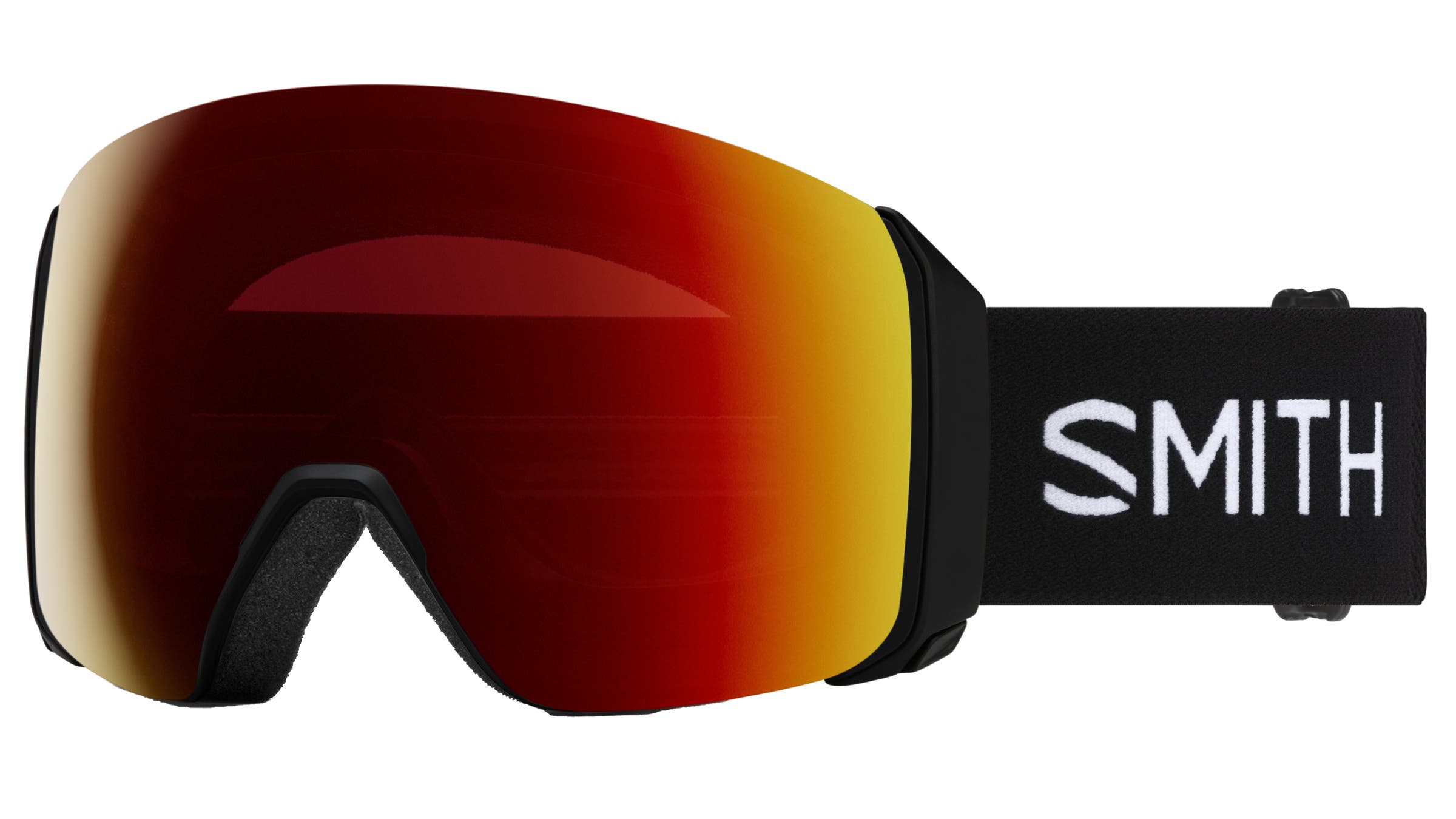
Best for Wider Faces
Smith 4D Mag XL
Lens shape: Spherical
Number of lenses included: 2
Face fit: Large to Extra Large
Pros and Cons
+ Immense field of view
+ Best-in-the-industry lens quality
+ Temple cutouts allow the goggle to be worn over eyeglasses
– Pricey
Smith’s 4D Mag is a top pick for skiers and riders looking for an extra-wide field of view. The new XL version of the goggle has the same qualities as the original—just even bigger, built oversized for those with wider mugs.
The lens is designed slightly curved over the bottom of the frame, which Smith says increases peripheral vision by 25 percent. Our take? “The lens quality is among the best in the test and field of vision is hands down unmatched,” said one tester, who wore the goggles skiing inbounds at California’s Homewood ski area on a powder day and backcountry touring on Lake Tahoe’s west shore. “They would be comically large on smaller faces, though.”
The magnetic lens system is straightforward and feels secure, considering how big and bulky the lens is. Ample venting on top kept steam at bay during high exertion resort laps. The 4D Mag XL has temple cutouts so it can also be worn over eyeglasses, too. Overall, testers agreed that If you’ve always struggled to find high-quality lenses in a frame that fits your bigger-than-average face, and you don’t mind paying a little more for the great quality and fit, these solve your problem.
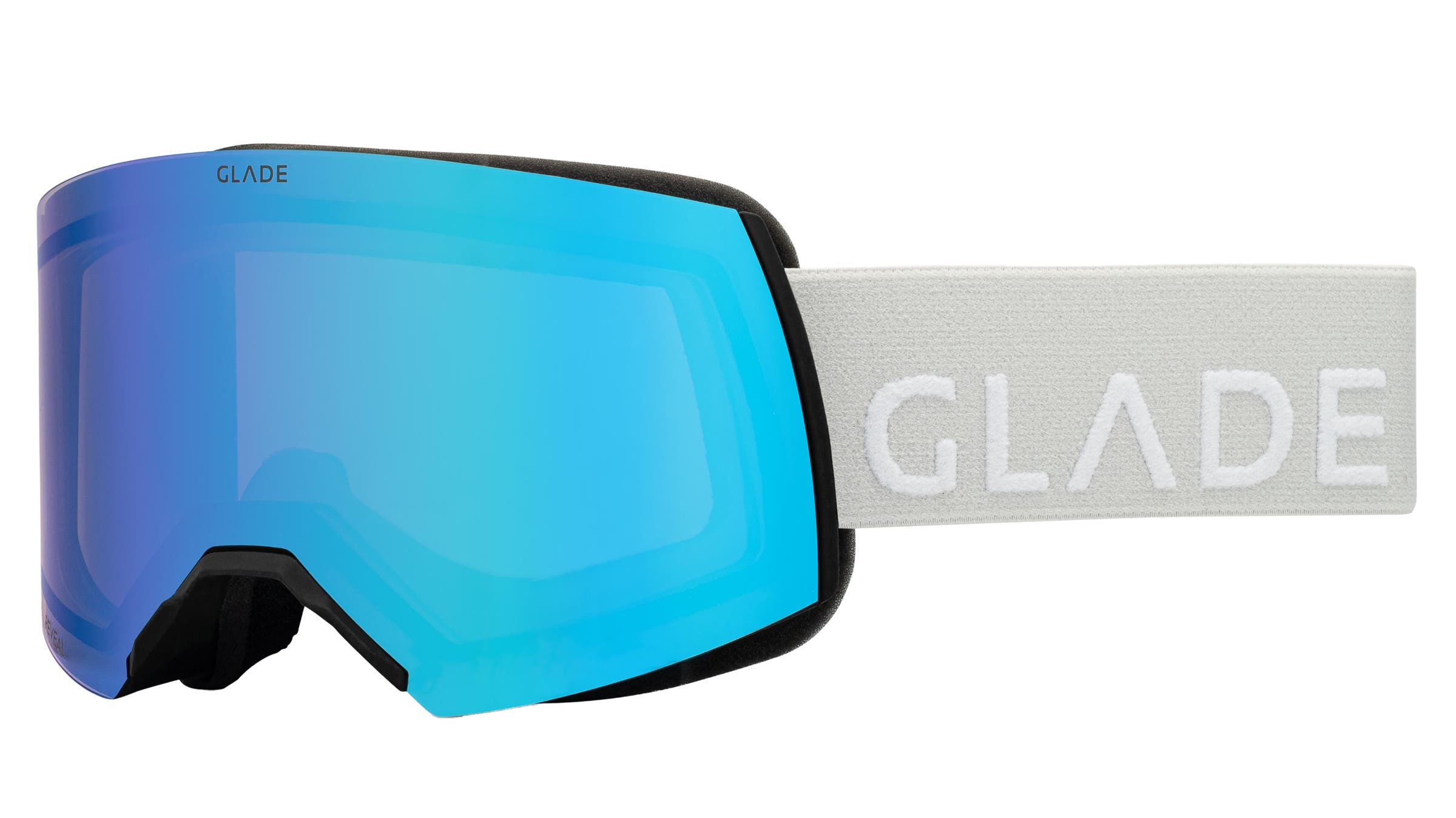
Best for Smaller Faces
Glade Adapt 2S
Lens shape: Cylindrical
Number of lenses included: 1
Face fit: Small
Pros and Cons
+ Reasonably priced
+ One-quiver goggle
+ Works well with a range of helmets
– Less expansive peripheral vision than others in the test
The idea behind the well-loved Glade Adapt 2 is to offer a solid one-lens goggle that you can bring with you anywhere, in any light conditions. That’s a hard promise to deliver, but Glade does it well with a photochromic lens that shifts in tint as the intensity of UV rays changes. This lens has an exceptionally wide range of light conditions that it can handle, from bright sun to milky skies.
The Glade Adapt 2S is the same goggle but in a smaller size, designed for those with more petite faces or people who don’t want oversized goggles that take up half their face. One tester brought these goggles—and these goggles alone—on a ski touring trip to Norway. “This is now my go-to travel goggle when I don’t want to bother bringing a change of lenses to accommodate different light conditions,” they said.
During testing, it fit seamlessly with a variety of helmets and was comfortable (read: no pressure points) on various sized faces. That said, testers did feel that the peripheral vision wasn’t quite as good as some of the goggles in the test, but that the convenience of not having to carry additional lenses—and the Glade’s low price point—compensated for that. Plan on keeping these around for a while—if you scratch the lens, you can buy a replacement lens for $70 to swap in.
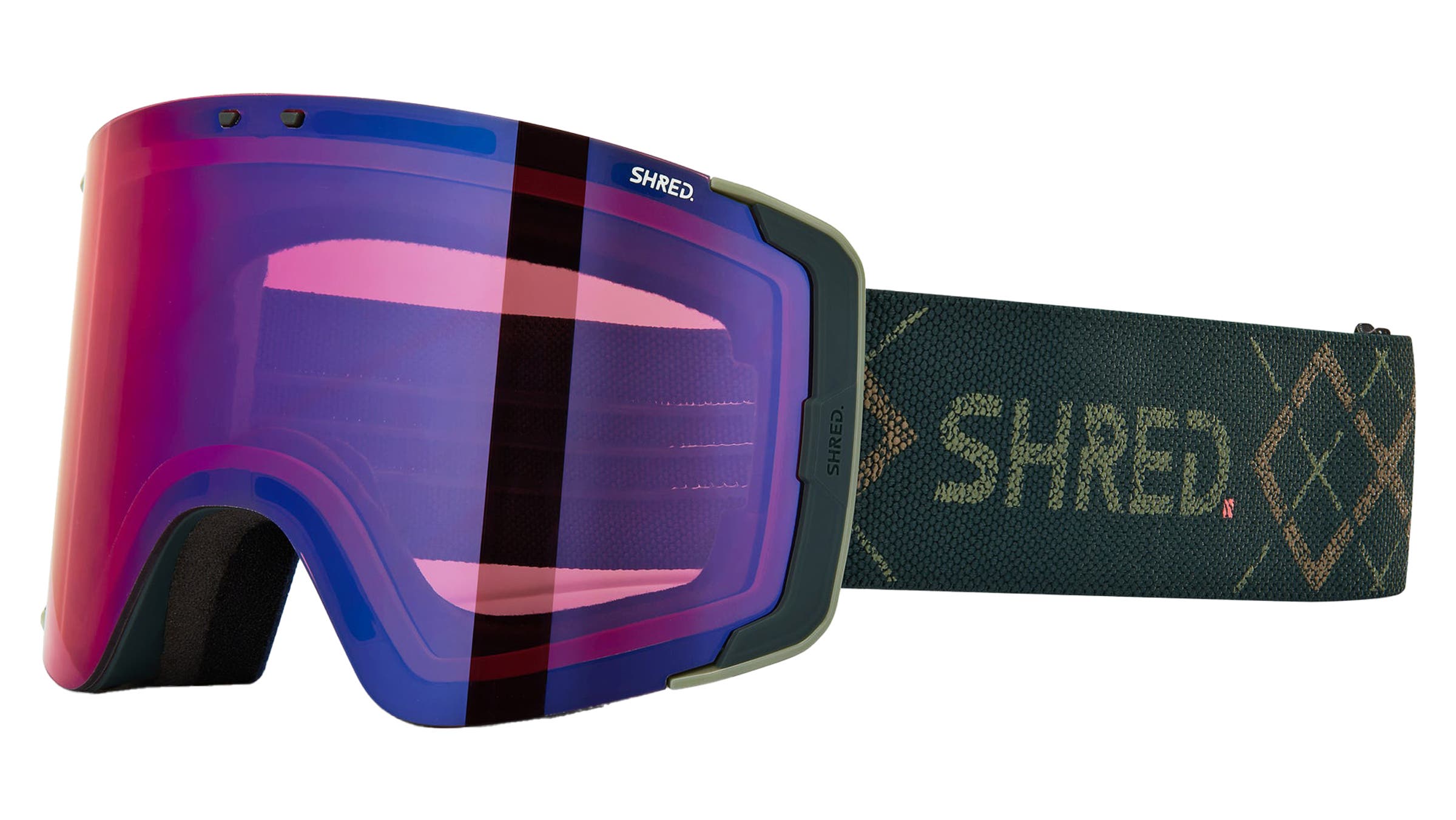
Best Fit and Comfort
Shred Gratify
Lens shape: Cylindrical
Number of lenses included: 1
Face fit: Small to large
Pros and Cons
+ Expansive field of vision
+ High-contrast lens you don’t need to swap out
+ Large enough to wear over eyeglasses
– Strap felt tight around larger helmets
Another winner in the one-lens-only category, the Shred Gratify goggles come with a do-it-all lens (we tested a mirrored rose option) that had excellent contrast-boosting optics in flat light and was still dark enough for full-sun days.
Some transition lenses make your eyes feel strained after a day of squinting in bright light, but these lenses offer solid protection from glare. No eye fatigue here. The lenses extend to the edge of the frames, making for a wider than average field of view. And though we probably wouldn’t buy a pair of goggles entirely because they felt nice and comfortable on our face, these impressed testers with their neutral, unobtrusive feel and lightweight, airy ventilation.
“The goggles have an easy-to-love universal fit,” one tester said. Another tester wore them while snow blowing and powder skiing during Tahoe’s biggest storm of the winter. “The fit was great during high-motion activities—not too tight and no need for lots of fiddling,” she said. It’s worth mentioning that some of our testers with larger noggins mentioned that the goggle strap felt tight around their helmets, so keep that in mind. Bonus: The Gratify goggles can be worn over prescription glasses.
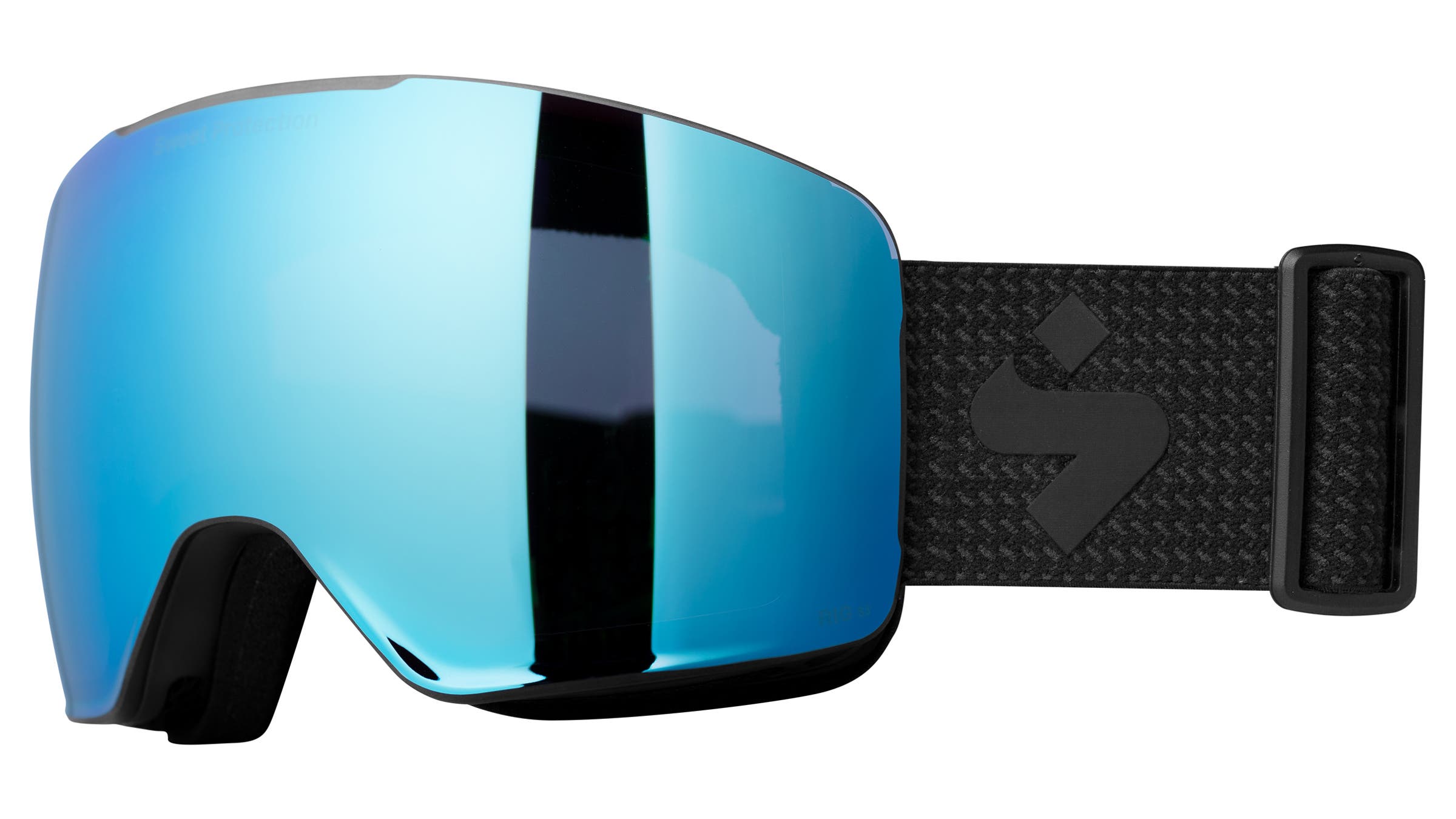
Honorable Mention
Sweet Protection Connor Rig Reflect
Lens shape: Toric
Number of lenses included: 1
Face fit: Medium to large
Pros and Cons
+ Excellent peripheral vision
+ Low-profile
+ Super comfy face foam
– Only comes with one lens
In order to increase the field of vision, goggles these days have gotten massively oversized. But the Sweet Protection Connor Rig Reflect offers a large field of vision without dramatically increasing the span of the goggle. These sleek frameless goggles do that thanks to a toric sculpted lens that gives you an understated feel with ample side vision.
“Medium-sized fit with large-sized vision,” one tester wrote. “I felt like I could see twice as much peripherally as other goggles. Extra good news on a crowded resort Saturday when you need to have your head on a swivel.”
Prospective buyers should know that the Connor Rig goggle only comes with one lens. If they want another lens for different conditions, they’ll have to order them separately at an additional cost. Fortunately, the lens swaps out easily, and the one we tested—which Sweet Protection calls Bixbite—was quite versatile. “Excellent in challenging light conditions,” one tester wrote. “Made things pop but still true to color.” The foam against the face felt “plush and pleasing,” according to another tester.
All agreed that these are ideal for all-day resort rippers looking for a wide field of view and a lens that can handle most conditions.
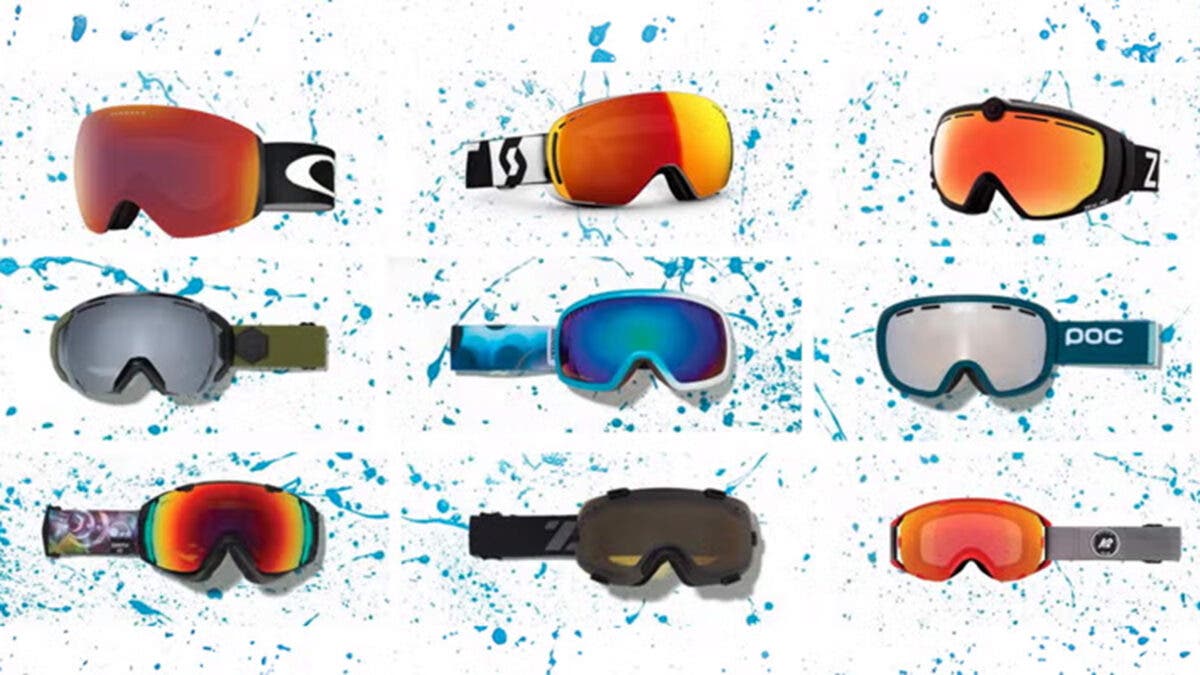
How to Choose the Right Goggles
Lens Tint
First consider whether you want goggles with lenses that can be interchanged—so you can swap lenses to fine-tune your vision based on the weather and light conditions—or if you prefer to skip the whole carrying around extra lenses task and have one transitional lens that can handle a wide range of conditions.
Frame Size
In terms of frame size, if you have a larger or rounder face, you’ll want more oversized goggles. If you’ve got a slight or narrow face, opt for goggles that run small. Some goggles come in a small version. If you wear prescription glasses, look for goggles with the OTG (over the glasses) indicator.
Lens Shape
Three lens shapes dominate the goggle market these days: spherical, cylindrical, and the newer arrival, toric. The shape impacts how the lens performs, the width of field, and the price of the goggles.
- Spherical lenses have a rounded, bubble-like effect, with wide peripheral vision that curves away from your eyes on both axes. Spherical lenses tend to be inherently fog-free thanks to increased volume, offer undistorted vision, and cost a bit more.
- Cylindrical lenses curve across your face but are flatter up and down. They have a more low-profile, smaller volume and they’re easy to keep scratch-free since they’re flatter against your face. They tend to be less expensive.
- Toric lenses are newer to the scene and combine aspects of the previous two shapes, making it a low-profile goggle that retains peripheral vision.
Ventilation/Fogging
Newer goggle models have extensive ventilation and an inner lens coating to prevent fogging. However, physics dictates that if there is sufficient moisture being provided from within, combined with warm and moist outside conditions, the goggles might eventually fog up.
When backcountry skiing, it is best to keep goggles in your backpack and get them out for the descent to avoid fogging issues. Don’t hike with them on your hat, helmet, or worse yet, around your neck. When you’re skiing at the resort, keep your goggles on your face as much as possible.
A trick for tram or gondola riders is to take them off and hang them from a window or tip of your skis to help keep them dry and shed some moisture. If you just put the goggles up on your helmet, they will not air out sufficiently, and the vents on your helmet could also pump additional moisture inside the goggle. Read more here.
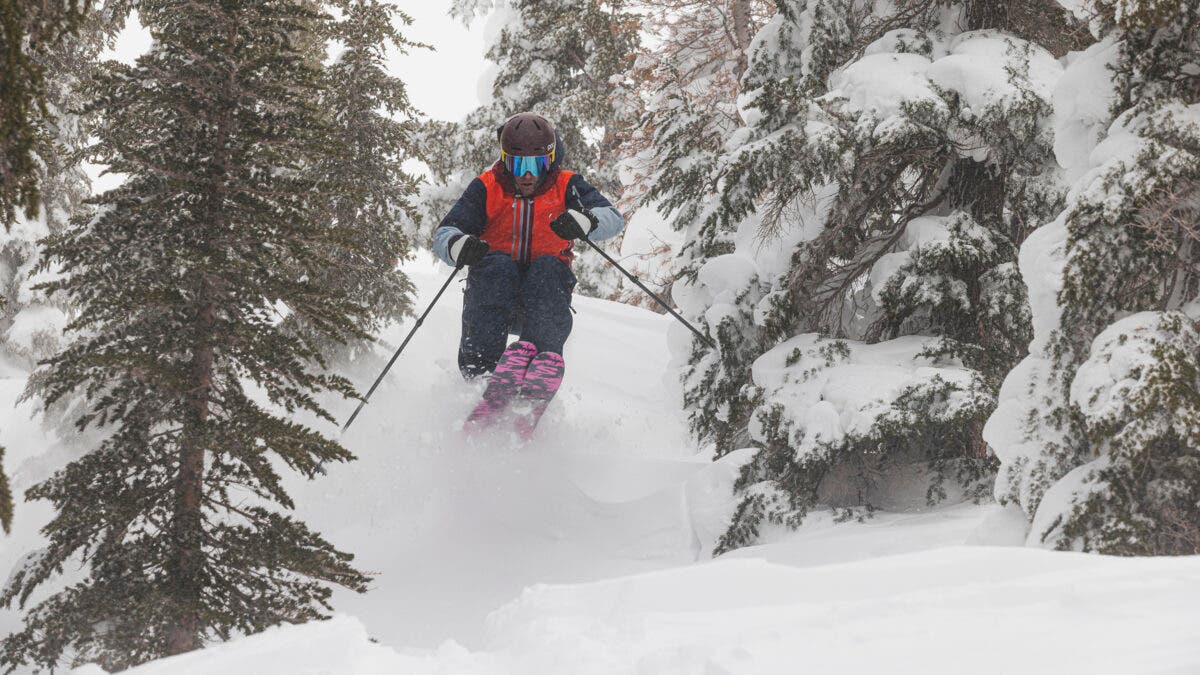
How We Test Ski Goggles
- Number of testers: 12
- Number of goggles tested: 51
- Number of lenses scratched during the test: 4
- Number of test goggles lost on a ski trip: 1
To determine which goggles were the biggest crowd pleasers, we took dozens of new-for-this-season goggles and distributed them amongst a dozen hardy skiers and riders based in California’s North Lake Tahoe. Ranging from ski-industry veterans to weekend shredders, these hard-working testers spent the season wearing a multitude of goggles while resort skiing and backcountry touring around Tahoe as well as on trips to Mammoth, Jackson Hole, and even a bucket-list excursion in Norway.
We asked testers to wear the goggles in all kinds of weather and light conditions, then fill out a feedback form that indicated everything from face fit to lens quality to helmet compatibility. In our quest to find the best ski goggles, we looked for adaptable, versatile goggles that were compatible with a wide range of helmets and fit on a variety of face shapes and sizes.
Using tester feedback, we narrowed the 51 models down to these 14 best ski goggles that earned the highest marks.
Meet Our Testers
Freelance journalist Megan Michelson is a skier based in Tahoe City, California. A former editor at Outside and Skiing magazines, she’s been testing and reviewing ski gear for going on 20 years now. She brought in some extra help to put goggles through the ringer in a range of conditions, including Lake Tahoe-based test crew specialists like bespectacled Peak Design CFO David Anhalt, splitboarding Tahoe realtor Maura Mack, and community organizer Kirstin Guinn.